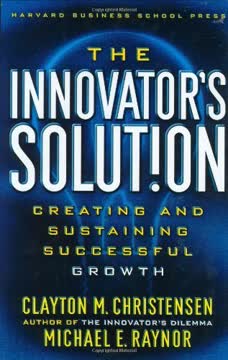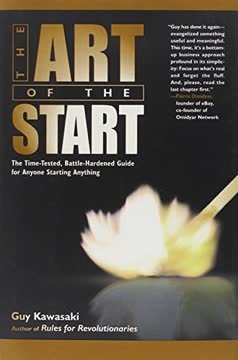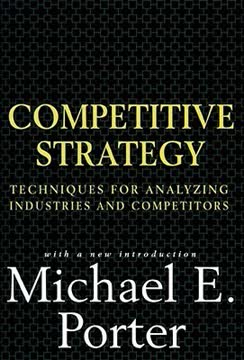つの重要なポイント
1. 無料経済学:限界費用がゼロに近づくとき
その結果、オンライン世界の年間純デフレ率はほぼ50%に達しており、今日YouTubeが動画をストリーミングするのにかかる費用は、1年後には半分になるということだ。
デジタル革命は、情報商品の生産と配信の限界費用を劇的に削減しました。この現象は、以下の3つの主要な技術トレンドによって推進されています:
- ムーアの法則:処理能力は18ヶ月ごとに倍増
- 急速に低下するストレージコスト:容量が毎年倍増
- 増加する帯域幅:速度が9ヶ月ごとに倍増
これらのトレンドが組み合わさることで、デジタル商品をますます安価に生産・配信できる「トリプルプレイ」の技術進歩が生まれます。その結果、多くのデジタル製品やサービスが無料で提供され、企業は代替的な方法で収益を上げることができます。
- 無料のデジタル商品例:
- メールサービス(Gmail、Outlook)
- ソーシャルメディアプラットフォーム(Facebook、Twitter)
- 動画ストリーミング(YouTube)
- オンライン百科事典(Wikipedia)
2. 無料を強力なマーケティングツールおよびビジネスモデルとして活用する
スティーブ・ジョブズの「ファイルトレーディングに伴うすべてのメタデータを処理する時間をかけるなら、最低賃金すら稼げない」という主張を覚えていますか?
フリーミアムモデルは、デジタル経済における支配的な戦略として浮上しました。このモデルは、基本的な製品やサービスを無料で提供し、プレミアム機能や拡張機能に対して料金を請求します。
- フリーミアムモデルの主要な側面:
- 無料提供で大規模なユーザーベースを引き付ける
- 少数のユーザーを有料顧客に転換する
- 低い限界費用で無料ユーザーをサポートする
成功したフリーミアムビジネスの例:
- Spotify(音楽ストリーミング)
- Dropbox(クラウドストレージ)
- LinkedIn(プロフェッショナルネットワーキング)
フリーミアムモデルは、企業が大規模なオーディエンスにリーチし、ブランド認知度を高めながら、プレミアム機能に価値を見出すユーザーから収益を上げることを可能にします。
3. 無料の心理学:なぜ消費者にとって魅力的なのか
「ゼロは単なる価格ではない」と彼は書いています。「ゼロは感情的なホットボタンであり、非合理的な興奮の源です。」
無料の力は、消費者に強力な感情的・心理的反応を引き起こす能力にあります。行動経済学者のダン・アリエリーの研究によれば、人々は無料のオファーに直面すると非合理的に行動することが示されています。
- 無料の主要な心理的効果:
- 費用対効果の分析が不要になる
- 損失や後悔の恐れが減少する
- 豊かさと寛大さの感覚を生み出す
これらの心理的要因により、消費者は有料の代替品がより良い価値を提供する場合でも、無料のオプションを選ぶことがよくあります。企業はこの現象を戦略的に利用して、無料のオファーを使って顧客を引き付け、関連製品やサービスの販売を促進することができます。
4. デジタルの豊富さとそれが生み出す新たな希少性
「情報が豊富な世界では、情報の豊富さは他の何かの希少性を意味します。情報が消費するものは明らかです:それは受信者の注意を消費します。」
豊富さのパラドックスは、新たな形の希少性を生み出します。デジタル時代において、情報や多くのデジタル商品は豊富になりましたが、これにより他の分野での希少性が生じました:
- デジタル時代の新たな希少性:
- 注意:情報過多の中で、ユーザーの注意を引き付け維持することが価値を持つ
- 信頼:情報が豊富になると、信頼できる情報源やキュレーターの重要性が増す
- 時間:選択肢や情報の豊富さにより、時間が貴重な資源となる
- 意味:膨大なデータから洞察を引き出す能力が重要になる
企業はこれらの新たな希少性に対処することで価値を創造できます:
- 情報のフィルタリングやキュレーションツールの開発
- 信頼できるブランドやコミュニティの構築
- 時間を節約するサービスや製品の提供
- 生データからの分析や意味の提供
5. 無料と競争するためのビジネス戦略
無料と競争する方法は、豊富さを超えて隣接する希少性を見つけることです。
差別化と付加価値サービスは、無料の代替品が容易に利用できる世界で競争するための重要な戦略です。企業は、無料のオプションよりもユニークまたは優れたものを提供することに焦点を当てる必要があります。
無料と競争するための戦略:
- 優れた品質やユーザー体験
- パーソナライズとカスタマイズ
- 補完的な製品やサービス
- 強力なブランドロイヤルティの構築
- 便利さや時間節約機能の提供
無料と競争する成功例:
- ボトルウォーターが水道水と競争
- プレミアムメールサービスが無料のウェブメールと競争
- 有料ストリーミングサービス(Netflix、HBO)が無料のビデオプラットフォームと競争
無料の代替品が提供する以上の付加価値を創造することに焦点を当てることで、企業は製品やサービスに対して料金を請求する正当性を持つことができます。
6. ギフト経済と非貨幣市場
自然はより良い生命を求めて生命を浪費する。
デジタルギフト経済は、伝統的な市場と並行して繁栄し、新しい価値交換の形を生み出しています。この経済は、評判、注目、コミュニティへの貢献の欲求など、非貨幣的な動機によって駆動されています。
デジタルギフト経済の主要な側面:
- オープンソースソフトウェアの開発
- ユーザー生成コンテンツ(ウィキ、フォーラム、レビュー)
- クリエイティブ・コモンズライセンス
これらの非貨幣市場は、伝統的な経済活動を補完し、強化することがよくあります:
- イノベーションとコラボレーションの促進
- コミュニティとネットワークの構築
- 価値あるリソースと知識ベースの創造
企業はギフト経済を活用することで:
- オープンソースプロジェクトをサポート
- ユーザー生成コンテンツを奨励
- 知識共有とコラボレーションのプラットフォームを構築
7. 無料がイノベーションと知的財産に与える影響
特許にはすでに無料の場所があります—それは17年後に発効します。
無料と知的財産の緊張関係は、イノベーションと知的財産権を再形成しています。無料がインセンティブを減少させることでイノベーションを損なうと主張する人もいれば、無料が創造性と進歩を促進すると主張する人もいます。
無料がイノベーションを促進する理由:
- 急速な反復と改善を奨励
- イノベーションへの広範な参加を可能にする
- 知識とアイデアの普及を促進
イノベーションにおける無料の反対理由:
- 創作者の経済的インセンティブを減少させる
- 研究開発への投資不足を招く可能性がある
- 伝統的なビジネスモデルを脅かす可能性がある
課題は、創作者の権利を保護しながら、イノベーションと進歩に適した環境を作り出すバランスを見つけることにあります。
8. 無料の環境的および社会的コスト
私たちのページは高価であるだけでなく、変更不可能です。印刷機が動き出すと、私たちの誤りや判断ミスは永遠に(少なくともリサイクルされるまで)保存されます。
無料の隠れたコストは、環境的および社会的に重大な影響を及ぼす可能性があります。デジタル無料は物理的な生産がないため環境に優しいように見えることが多いですが、それでも負の外部性を持つことがあります。
無料の潜在的な負の影響:
- データセンターやデバイス生産の環境コスト
- 注意経済の社会的コスト(例:無料のソーシャルメディアへの依存)
- 伝統的産業の経済的混乱
これらの課題に対処するには:
- 真のコストを価格モデルに組み込む
- より持続可能な技術の開発
- 無料の利点とその潜在的な欠点のバランスを取る
9. デジタル経済の世界における無料の未来
突然、1世紀以上前に他の経済学者を嘲笑するために発明された理論的な経済モデルが、オンライン価格設定の法則となった。
無料の進化は、デジタル経済を引き続き形作るでしょう。技術が進歩し、新しいビジネスモデルが出現するにつれて、無料の概念はさらに普及し、複雑化する可能性があります。
無料の将来の発展の可能性:
- 通貨としてのデータの利用増加
- フリーミアムモデルの進化
- 無料オファーにおけるブロックチェーンと暗号通貨の統合
- 仮想現実および拡張現実における新しい価値交換の形
企業と消費者はこれらの変化に適応し、ますます無料のデジタル環境で価値を創造し、捕捉する新しい方法を見つける必要があります。
最終更新日:
FAQ
What's Free: The Future of a Radical Price by Chris Anderson about?
- Exploration of "Free" Concept: The book examines how the concept of "free" has evolved from a marketing tactic to a core economic model in the digital age.
- Impact on Business Models: It discusses how technological advancements have enabled businesses to offer products and services at little to no cost.
- Cultural and Economic Implications: Anderson explores the societal and psychological effects of free, reshaping consumer behavior and business strategies.
Why should I read Free: The Future of a Radical Price by Chris Anderson?
- Understanding Modern Economics: The book provides insights into new economic models emerging in the digital landscape, crucial for business and technology enthusiasts.
- Real-World Examples: Anderson uses case studies like Google and Craigslist to show how companies leverage free to disrupt traditional markets.
- Future-Proofing Knowledge: Understanding the principles in the book helps readers navigate the rapidly changing economic environment influenced by digital technologies.
What are the key takeaways of Free: The Future of a Radical Price by Chris Anderson?
- Free as a Business Model: "Free" is not just a marketing strategy but a viable business model that can lead to significant market share and customer loyalty.
- Psychology of Free: Consumers perceive free products differently, often associating them with lower quality unless they have always been free.
- Cross-Subsidization: The book explains models where one product is free to drive sales of another, highlighting the importance of understanding these dynamics.
What are the best quotes from Free: The Future of a Radical Price by Chris Anderson and what do they mean?
- "There’s no such thing as a free lunch.": While something may be offered for free, there are often hidden costs or trade-offs involved.
- "Information wants to be free.": Reflects the dual nature of information in the digital age, being abundant and easily shared yet valuable.
- "You can make money giving things away.": Highlights the paradox where businesses thrive by offering free products, relying on alternative revenue streams.
How does Chris Anderson define "free" in Free: The Future of a Radical Price?
- Two Meanings of Free: Anderson distinguishes between "free as in freedom" and "free as in zero cost," emphasizing the latter in digital economics.
- Cultural Context: The perception of free has evolved, with consumers often expecting digital products to be free.
- Psychological Implications: Free affects consumer behavior, leading to increased usage and engagement when products are offered at no cost.
What is "freeconomics" as discussed in Free: The Future of a Radical Price by Chris Anderson?
- Definition of Freeconomics: Refers to economic principles and business models arising from free products and services, especially in the digital realm.
- Market Dynamics: Disrupts traditional pricing models, leading to new revenue generation methods like advertising and premium services.
- Examples of Freeconomics: Companies like Google and Facebook offer free services while monetizing through advertising.
How does Free: The Future of a Radical Price by Chris Anderson illustrate the impact of free on traditional industries?
- Case Studies: Uses examples like the decline of print newspapers due to free online content to show disruption of traditional models.
- Market Redistribution: Free can redistribute wealth within industries, benefiting consumers while challenging established companies.
- Long-Term Effects: While initially harmful to existing businesses, free can create new opportunities and markets benefiting society.
What are the psychological effects of free on consumers according to Free: The Future of a Radical Price by Chris Anderson?
- Perception of Value: Consumers often perceive free products as lower quality, especially if they were previously paid products.
- Increased Engagement: Free offerings lead to higher engagement and usage rates, removing barriers to entry.
- Mental Transaction Costs: Free eliminates cognitive effort required for purchasing decisions, encouraging participation.
How does Chris Anderson explain the concept of cross-subsidization in Free: The Future of a Radical Price?
- Definition of Cross-Subsidization: Occurs when one product is free or low-cost to drive sales of another profitable product.
- Examples in Business: Includes models like the razor-and-blades, where the razor is cheap to encourage blade purchases.
- Strategic Importance: Understanding cross-subsidization is crucial for developing effective business models in the age of free.
What role does technology play in the concept of free according to Free: The Future of a Radical Price by Chris Anderson?
- Driving Down Costs: Advancements in technology have made it possible to offer products and services for free.
- Creating New Markets: Technology enables new markets and business models leveraging free, transforming industries.
- Future Implications: As technology evolves, free will become more integral to business strategies and consumer behavior.
How does Free: The Future of a Radical Price by Chris Anderson address the future of free in the economy?
- Ongoing Evolution: Free will continue to evolve, influencing business operations and consumer interactions.
- Potential Challenges: Risks include monopolies forming around free services, limiting competition and innovation.
- Opportunities for Growth: Embracing free principles can lead to new opportunities for growth and innovation in the economy.
How does Free: The Future of a Radical Price by Chris Anderson address the issue of piracy?
- Piracy as Marketing: Suggests piracy can increase visibility and audience reach for creators.
- Changing Attitudes: Attitudes toward piracy are evolving, especially among younger generations.
- Long-Term Strategies: Creators should leverage free distribution benefits while finding monetization methods.
レビュー
本書『Free: The Future of a Radical Price』は、デジタル時代における「無料」という概念を探求し、製品やサービスを無償で提供することを中心としたさまざまなビジネスモデルや戦略について論じている。読者の中には、本書を洞察に富み、刺激的だと感じた人もいれば、繰り返しが多く、過度に楽観的だと感じた人もいた。本書は、無料提供の歴史的な事例とそれがビジネスに与えた影響、そして消費者が無料製品に対して示す心理についても考察している。賛否両論あるものの、多くの読者は、デジタル時代における経済の変化についてのアンダーソンの分析を評価している。
Similar Books















